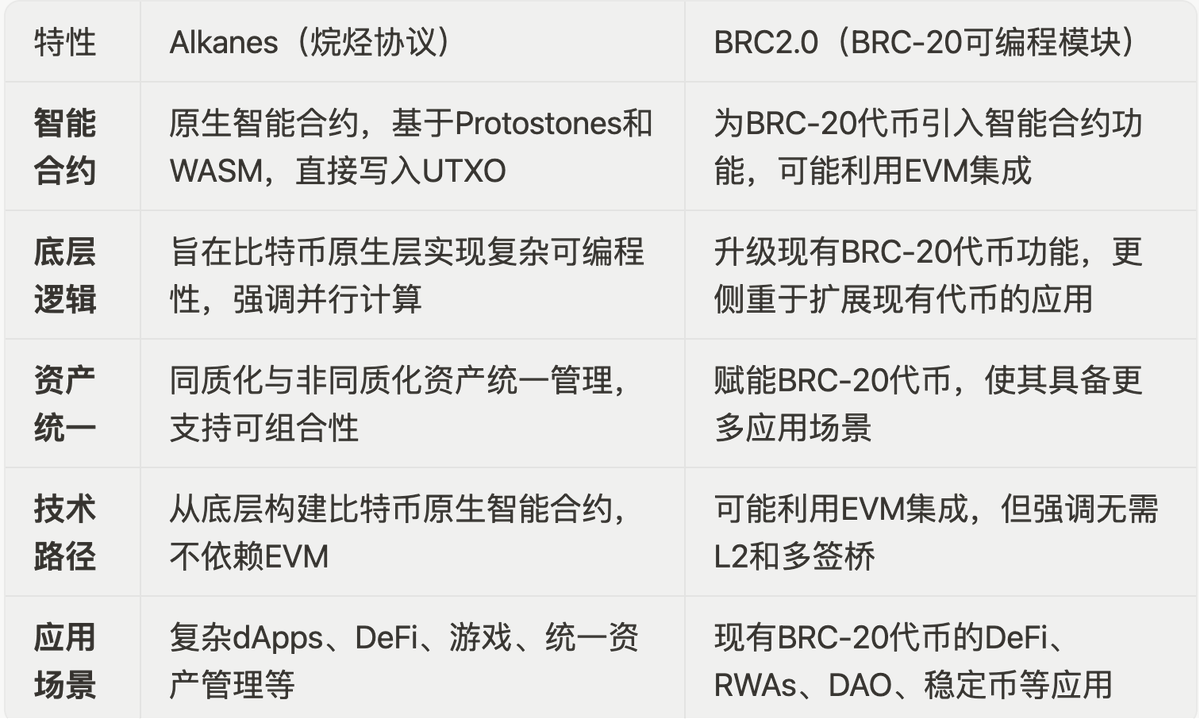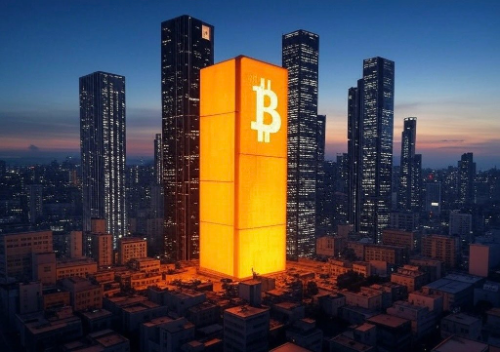【A New Era in the Bitcoin Ecosystem: Alkanes vs BRC2.0, Who Will Seize the Future First?】
Recently shared two popular protocols in the Bitcoin ecosystem: Alkanes and BRC2.0:
"The New Future of Bitcoin, Ignited by Alkanes?"
"BRC-2.0 Introduces Smart Contract Functionality for All BRC-20 Tokens"
One brings new hope to the entire village as an "upgraded rune with smart contracts," while the other carries the historical mission of revitalizing the "remaining" $297 million market cap (a blessing for those holding useless inscriptions, as the waste in hand can now be utilized 🤣).
Let’s briefly compare the core differences between these two protocols—
#Alkanes: The Native Smart Contract Revolution of Bitcoin
Alkanes is a new type of meta-protocol built on the Bitcoin blockchain, capable of running various complex decentralized applications (dApps) like a smartphone. Highlights include:
1. Native Smart Contracts: Alkanes introduces a "smart contract instruction set" on Bitcoin, allowing smart contracts to be written and executed directly on the Bitcoin native layer without relying on cross-chain bridges or complex layer-two solutions.
2. WASM Virtual Machine: All operational instructions run through WebAssembly (WASM), embedding smart contracts directly into Bitcoin's transaction data, ensuring immutability.
3. Unified Assets and Programmability: In the Alkanes protocol, fungible tokens and non-fungible tokens (NFTs, referred to as "Orbitals") are treated as a unified "token." Asset management and interoperability become more convenient.
4. Parallel Computing: Designed from the outset with Bitcoin's graph structure and UTXO model in mind, addressing the issues EVM encounters when processing UTXOs.
BRC2.0: Smart Upgrade of BRC-20
BRC2.0 introduces the "BRC20 Programmable Module," bringing smart contract functionality to all BRC-20 tokens:
1. Smart BRC-20 Tokens: Allows existing BRC-20 tokens to participate in DeFi, RWAs, DAOs, and stablecoin applications.
2. No Need for Cross-Chain Bridges or L2: Similar to Alkanes, BRC2.0 also avoids reliance on multi-signature bridges or layer-two solutions.
3. EVM Integration: BRC2.0 has activated the programmability of BRC-20 on the Signet testnet (EVM integration), leveraging the ecological advantages of EVM to attract more developers and applications.
A table to see the core differences:
Summary of Differences:
Alkanes builds a brand new, native smart contract platform on Bitcoin "from scratch."
BRC2.0 focuses more on inheritance, "upgrading" existing BRC-20 tokens to expand their application scope.
Future Application Outlook:
Alkanes: To become the "operating system" of the Bitcoin ecosystem, supporting more complex, native DeFi protocols, on-chain games, decentralized identities, etc. Its native nature and parallel computing capabilities will enhance the performance and security of BTC. Many Bitcoin native DEXs, lending protocols, and even large multiplayer online games based on Alkanes will emerge.
BRC2.0: Existing BRC-20 tokens will be revitalized, offering richer gameplay and broader markets.
The Future of the BTC Ecosystem: A Blooming Landscape, Native is King
From the initial Ordinals inscriptions, to Runes, and now Alkanes and BRC2.0, each iteration focuses on how to make Bitcoin more programmable. As someone holding numerous inscriptions (peaking at 200WU 🤣), I personally lean towards BRC2.0, but must objectively acknowledge: the future of Bitcoin belongs to the native and programmable.
Alkanes team founder @taggaOyl has also mentioned in other contexts the possibility of considering some degree of interoperability between Alkanes and BRC20.
In the future, let’s boldly predict:
1. Native will be the core competitive advantage: As protocols like Alkanes mature, native smart contracts on Bitcoin will become mainstream.
2. Application scenarios will greatly expand: Bitcoin will no longer be just a store of value; various applications such as DeFi, NFTs, games, and social networks will thrive on Bitcoin, forming a prosperous ecosystem.
3. Developer ecosystem will grow: With the improvement of protocols and the richness of tools, more and more developers will collaboratively build a decentralized world.
4. Interoperability will be key: Native is the trend, but how various protocols can work together, innovate forward, and maintain backward compatibility while making many friends is also an important issue that needs to be addressed.
Show original

7.36K
38
The content on this page is provided by third parties. Unless otherwise stated, OKX is not the author of the cited article(s) and does not claim any copyright in the materials. The content is provided for informational purposes only and does not represent the views of OKX. It is not intended to be an endorsement of any kind and should not be considered investment advice or a solicitation to buy or sell digital assets. To the extent generative AI is utilized to provide summaries or other information, such AI generated content may be inaccurate or inconsistent. Please read the linked article for more details and information. OKX is not responsible for content hosted on third party sites. Digital asset holdings, including stablecoins and NFTs, involve a high degree of risk and can fluctuate greatly. You should carefully consider whether trading or holding digital assets is suitable for you in light of your financial condition.

